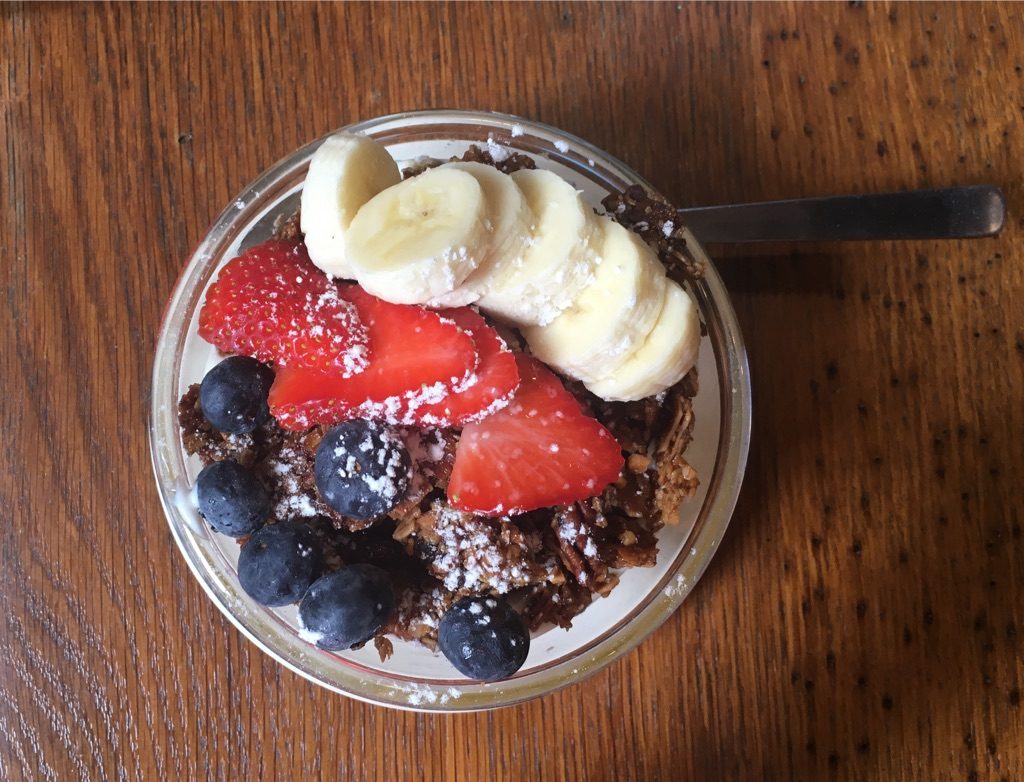For expat stomachs looking for familiar foods, get a taste of some alternatives in my piece for the May issue of the Singapore American Newspaper:

For most people, it’s the stomach that takes the longest to settle into a new place. Even if your mind is thrilled at living in a different country and you love trying unfamiliar foods, at some point, your belly starts whining, “When can we go home?” While you can order practically anything online these days, the cost (both in time and money) of recreating your childhood favorites can add up quickly. But every problem is an opportunity in disguise, to quote John Adams, and this can be a great excuse to shake up your list of go-to meals. Below, I’ve rounded up some cheaper and/or local alternatives that you can substitute for your pricey favorites until your next trip home. Who knows? You may end up liking the substitutions better.
Instead of: Strawberries, Blackberries, Raspberries & Cherries
Try: Mangoes, Dragon Fruit, Mangosteens & Passionfruit
$12.80 for 9 strawberries, anyone? This was one of my stomach’s biggest temper tantrums, since ripe berries have been a longtime pleasure for me. But paying that much for a tiny punnet of watery berries just wasn’t worth it. Fortunately, the tropics are literally overflowing with fruit and the shorter distance fresh food has to travel to get to you, the healthier and tastier it will be. Due to their spiky, scaly and sometimes fuzzy appearances, regional fruit can appear intimidating, but look to the pineapple for encouragement. It also must have baffled Westerners when it first appeared on supermarket shelves, but we think nothing of its prickly hide these days. Give other tropical fruit a similar chance. (Though if you want to skip durian, no one will hold it against you.)
Instead of: Yoghurt
Try: Rice Pudding
With much of Asia being lactose intolerant, the options for yoghurt are limited and/or expensive. A French friend commented that the average yoghurt aisle back home was 20-30 meters, as opposed to the 2 meters here. However, you may have noticed there’s plenty of rice to be found and for fairly cheap. Rice pudding is simple to make at home and is comparable to yoghurt in texture and calorie count, though you won’t get the same bacterial benefits. Also like yoghurt, rice pudding can be sweet or savory. In Singapore, the most common flavors I’ve seen are mango or coconut.
Instead of: Potato chips
Try: Nori (dried seaweed)
You’ve likely already encountered nori as the wrapping on your sushi, but it’s also crazy tasty when in dried sheets. Plus, the health benefits leave other salty snacks in the dust. In 100 grams, nori has: Protein, Vitamin A, Folate, Vitamin C, Vitamin E, Vitamin K, Calcium, Iron, Magnesium, Phosphorus, Potassium and Zinc. All for 35 calories and 0.28 grams of fat. Potato chips (even veggie chips) also boast some of the above vitamins and minerals, but for up to a whopping 536 calories per 100 grams, plus a ton more salt, sugar and 23 grams of fat. Prices between nori and potato chips are comparable too.
Instead of: Mexican food
Try: Arabic food
Another big heartbreak for me upon moving to Singapore was the scarcity of excellent Mexican food that wouldn’t break the bank. But have you ever noticed how similar Mexican and Arabic cuisines are? Compare the holy trio of guacamole, salsa and sour cream to the dips found in mezzes. According to chef Roberto Santibañez, flavors like cilantro, cumin and cinnamon wound up in Mexico centuries ago thanks to the Arabic empire’s spice routes. The most obvious overlap has to be tacos al pastor, which are directly descended from Lebanese shawarma. So, the next time you’re craving a bit of Mexican, head to the Arab Quarter and follow your nose. I doubt you’ll leave unsatisfied.
